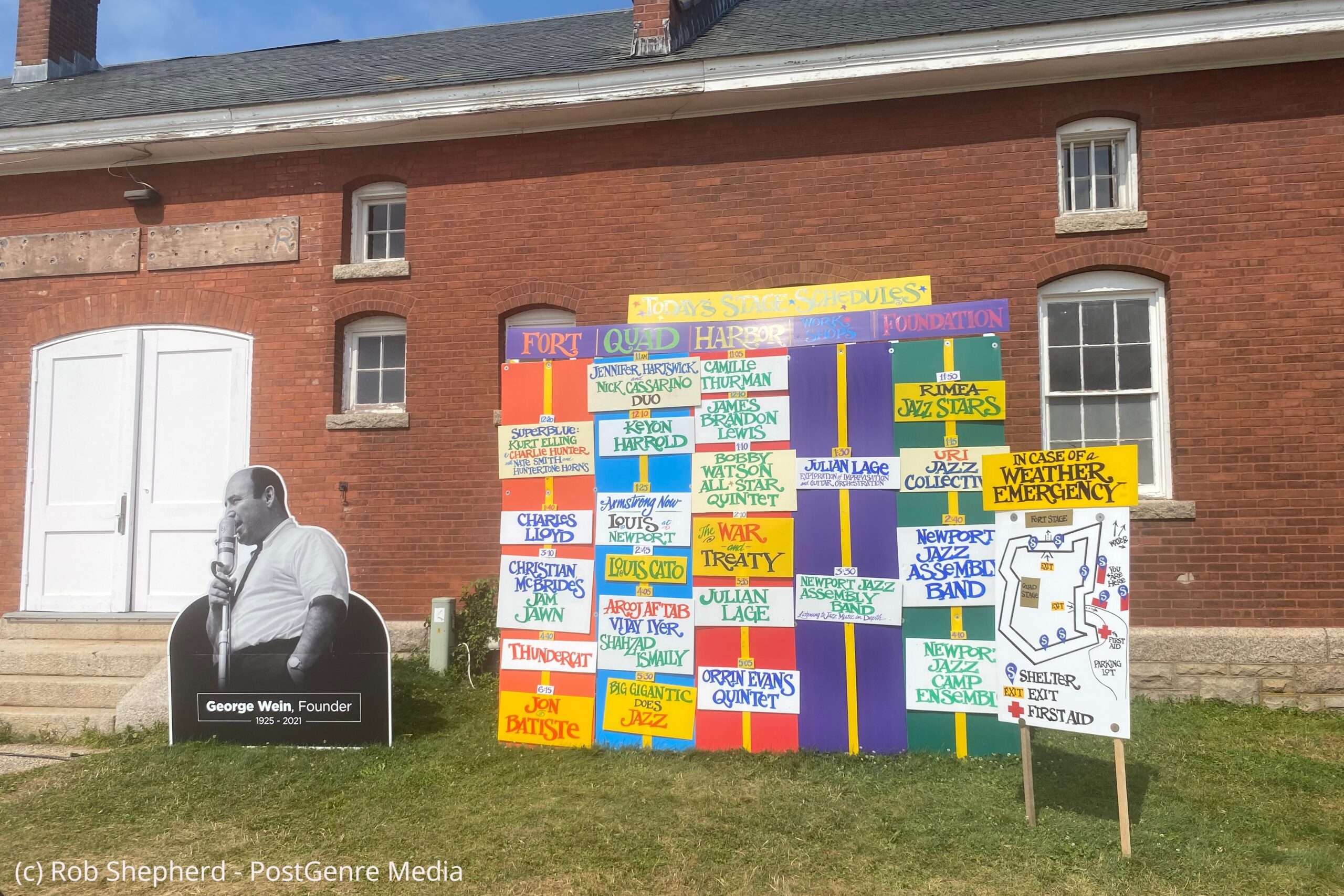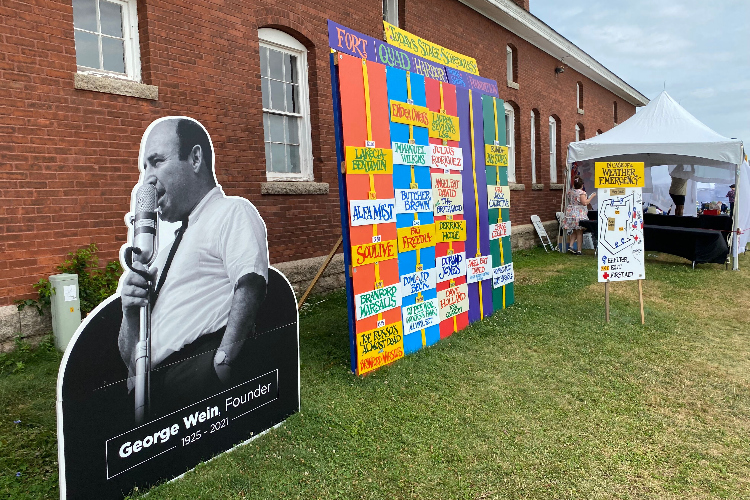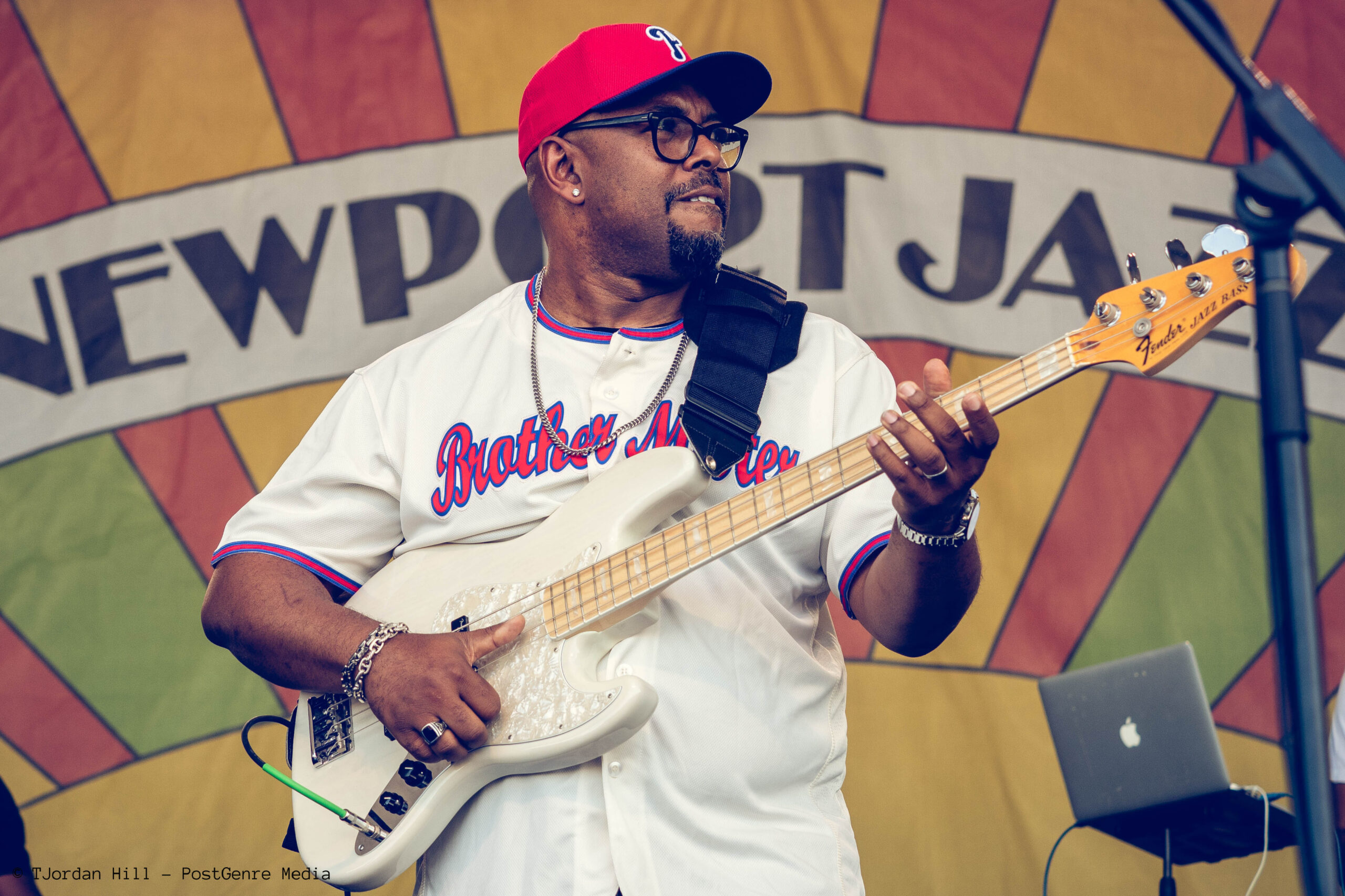Observations from Day Two of the 2023 Newport Jazz Festival
|
Getting your Trinity Audio player ready...
|
The second day of the 2023 Newport Jazz Festival, Saturday, August 5, 2023, can be seen as a masterclass on the intersectionality of tradition and innovation. Specifically, the day emphasized different artists that take traditional jazz ensemble settings, and stretch them into new areas. In so doing, the musicians proved not only the continued vibrancy of jazz, but also the staying power of its traditions.

Starting first at the Harbor Stage, Camille Thurman took the stage with the Darrell Green Quartet. It is commonplace for a vocalist and a band backing them to call itself the “singer’s name and the so-and-so-ensemble.” For instance, Sarah Vaughan performed at the 1967 Newport Jazz Festival as “Sarah Vaughan and the Bob James Trio.” In a sense, Thurman’s group follows this lineage as a singer, but that is only one of her talents. She is also a gifted saxophonist. It is rare to see a vocalist who doubles on a horn, with such artists more likely to play instruments that would permit them to sing as they play, for instance, the guitar or piano. Even on the saxophone, Thurman is an outlier from the norm. Although women have always played the instrument – Vi Redd comes to mind – far too often, however, they are excluded from most mainstream discussions of sax masters. Thurman is one of a handful of musicians shooting to change these prejudices. Musically, Thurman and the quartet – Green, Lonnie Plaxico, Danny Bryant, and Wallace Roney, Jr. – played a series of originals and old standards. But even the longstanding tunes were reexamined, as with “Night and Day,” presented at a breakneck tempo with a long vocalese solo.


The next set at the Harbor Stage was by another great saxophonist James Brandon Lewis. An artist with much – well deserved – love from the jazz press, Lewis has explored everything from the music of Mahalia Jackson to the interaction between the fields of molecular biology and music. At Newport, JBL presented a trio with drummer Chad Taylor and electric bassist Josh Werner. The saxophone-bass-drums trio has a long history in jazz, from Sonny Rollins’ Way Out West (Contemporary, 1957) to Joshua Redman’s Back East (Nonesuch, 2007). But those predecessors have generally used an upright bass, while Werner uses an electric one. The electrification of the bass is a critical change as it allows for music outside of jazz to be injected into the trio setting. Rock and punk elements emerged throughout the set, adding a propulsiveness and edge to many of the pieces. For instance, although Lewis quoted “Somewhere Over the Rainbow” on “Someday We Will All Be Free,” crashing waves of sound brought a rhythmic urgency to the piece that is far beyond anything Harold Arlen could have ever envisioned.


Up inside the Fort’s walls at the Quad Stage, three top trumpeters- Marquis Hill, Giveton Gelin, and Bruce Harris – honored the great Louis Armstrong and his legacy while refusing to rehash what came before. The Armstrong Now: At Newport set was conceived by the Louis Armstrong House. Although the museum is dedicated to preserving history, it sagely gave its young horn players the freedom to use such background however they see fit. The result was pieces that began with audio of Satchmo, whether singing the national anthem or commenting on the Newport Jazz Festival itself. More than mere introductory material, the ensemble used these clips – reminiscent of sampling in hip hop – as the foundation for their own explorations. Compositions long associated with Armstrong were recontextualized while retaining their essence. His self-proclaimed theme, “Sleepytime Down South,” maintained the romanticism of its original, even as Gelin used it to launch into a seemingly freely improvised solo. But there was also a series of new compositions by the trumpeters where they traded lines, presenting their own voices while still honoring the great one.

But not all legends are gone. One of the living masters, Charles Lloyd, took the Fort Stage. The saxophonist has always displayed a unique power to tap into more popular sensibilities while never sacrificing his artistic vision. Forest Flower (Atlantic, 1967) strongly appealed to the flower child generation without abandoning its jazz roots. Almost six decades later, Lloyd – who has performed at Newport frequently over the years – is still pushing the music forward. A particular highlight of his set was a piece that found the leader on flute as drummer Eric Harland and bassist Reuben Rogers created a groove subtly reminiscent of electronic music. Broken flute lines and a high-speed tempo oddly recalled broken beat music more than anything Lloyd has typically explored.


Next on the Fort Stage was Christian McBride’s Jam Jawn. A highlight each year since McBride became Artistic Director, these jams congregate many different musicians to see what ad hoc magic they can create together. There is a long precedent for such jam sessions, particularly at Newport. Even the first Newport Jazz Festival concluded with one. This year’s rendition featured Nate Smith, Negah Santos, Eric Krasno, Ravi Coltrane, Bob James, and McBride. The combination of funk-oriented artists like Krasno and jazz standard bearers like Coltrane gave the set a distinctive vibe. A particular high point came when the group performed James’ heavily sampled “Westchester Lady.” The selection of this piece highlighted the continuum from jazz to hip hop. This version featured a heavy groove that evolves into a bass solo citing Miles Davis’ “So What” and concludes with a flurry of notes before meeting its seemingly sudden end. The following, “Hound Dog” brought out surprise guest Celisse, who tied the Lieber and Stoller tune to both the Blues of Big Mama Thornton and the rock of Elvis, all within the jazz prism.


Over at the Quad Stage, Arooj Aftab, Vijay Iyer, and Shahzad Ismaily challenged both notions of free improvisation and the concept of a vocal trio. As to the former, the trio prefers the term “live composing” to give such its legitimately deserved weight. Far too often, most people associate freely creating in the moment with harsh and dissonant sounds. However, the group’s use of space, quiet, and softness challenges this preconceptions while remaining adventurous. The whole set was a laidback affair. Aftab even held a massive, full, wine glass as she sang. Or as detailed on this site previously – and by others – her voice sounds more like a horn. As Aftab noted during the performance, she is “trying to emulate [her] best trumpet.” Due to this element, the trio also adds an egalitarianism often missing from small groups featuring vocalists, with the singer frequently taking primary focus.


Following Afrab/Iyer/Ismaily at the Quad Stage came Big Gigantic Does Jazz. At the group’s core are saxophonist Dominic Lalli and drummer Jeremy Salken. Both heavily explore electronica and hip hop in live contexts. While hints of jazz are evident in some of their music, particularly Lalli’s solos, they typically do not drive the group’s music. Or so it seems. With their Jazz set, the duo expanded to an octet, but the larger ensemble also scaled back instrumentally to focus primarily on acoustic instruments rather than electronic manipulations. Out of this change came radically reconceived versions of BG hits such as “Got the Love” and “Little Things” that sounded more tied to the jazz lineage than their recorded versions typically let on. The songs were as danceable as ever. The message was clear: the vines of jazz reach into all music, it is just not always blatantly obvious.



The Fort Stage closer, Jon Batiste, underscored the relevance of Ray Charles by evoking his several, particularly his 1958 performance, appearances at Newport over the years. Backed by a big band all clad in suits, Batiste gave a spirited performance in which he ran through old tunes like “Let the Good Times Roll” and “Night Time is the Right Time”, showing his reverence for Ray. But he also presented several originals, including the gospel-influenced “It’s All Right” in which he sang falsetto. Throughout, elements of all kinds of music emerged, from a Beethoven interlude to “Moon River”, staying true to jazz’s expansive scope. But, as Batiste properly noted, “I love all music, but there’s something special about jazz.” That “something” is the same thing that allows a hundred-year-old art form to continually evolve and remain vibrant by providing new avenues for artists to express themselves in ways relevant to the modern area, whether by is changing misconceptions about roles in bands, building off of the messages of the ancestors, or finding the music deep beneath the surface of other sounds.
Stay Tuned for Observations from Day Three of the 2023 Newport Jazz Festival. Experience both the history and modernity that the Newport Jazz Festival offers. The 2024 edition will take place from August 2, 2024 to August 4, 2024 at Fort Adams in Newport, Rhode Island. More information is available on the Festival’s website. We will be providing coverage live from the event.



